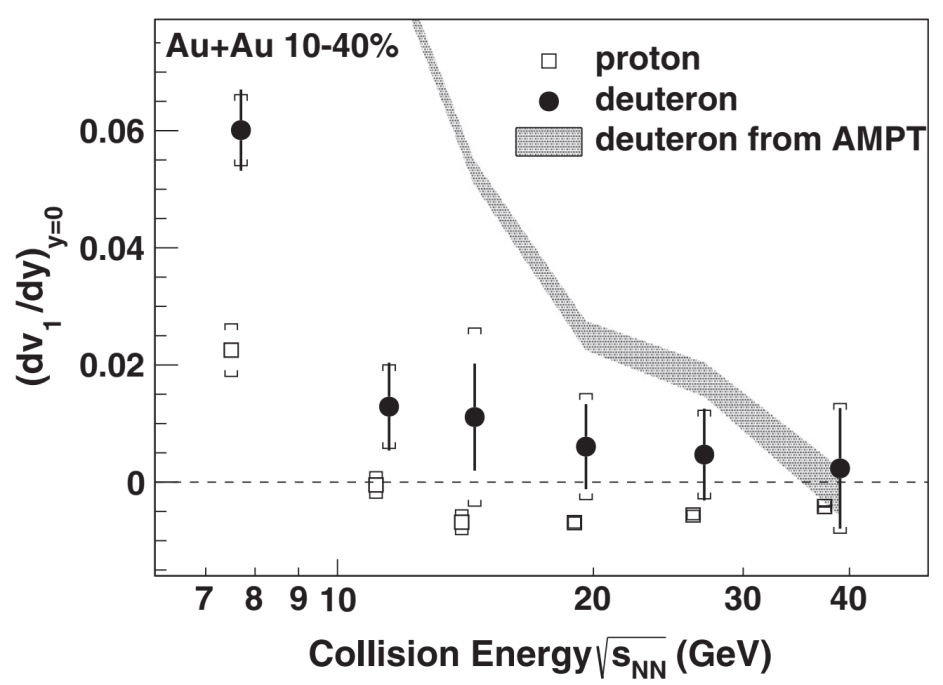Researchers Present New Measurement of Deuteron Collective Flow at RHIC-STAR
Relativistic heavy ion collisions can form a new strongly interacting matter — Quark Gluon Plasma (QGP), which is believed to be the state of our universe in the early moments of the big bang and the state of the inner neutron stars. One of the main goals of the STAR experiment at Relativistic Heavy Ion Collider (RHIC) is to explore the state and evolution of QGP.
The production of light nuclei in high-energy heavy-ion collisions, which is sensitive to the properties of the collision system and its evolution, is now a hot subject of intense debate.
Recently, researchers at the Institute of Modern Physics (IMP) of the Chinese Academy of Sciences (CAS) measured one of the deuteron collective flow, directed flow (v1), in Au+Au collisions at energies of 7.7-39 GeV per colliding nucleon pair from the RHIC-STAR experiment. The study provides additional information to understand the mechanisms of light nucleus production in high-energy heavy-ion collisions.
It is found that the directed flow of deuterons has a more pronounced energy dependence than that of protons. Compared to the proton v1, the v1 slope at the mid-rapidity, dv1/dy, shows a strong increase at the lowest collision energy of 7.7 GeV. For other collision energies above 7.7 GeV, the protons dv1/dy are negative, while those of deuterons are positive and close to zero.
Researchers then compared the experimental results with two commonly used phenomenological models, thermal model and nucleon coalescence model. However, the models cannot explain the data. At 7.7 GeV and 11.5 GeV, the nucleon coalescence picture is approximately valid for the data at higher transverse momentum within, while the deuteron v1 shows enhancements towards very low transverse momentum. There is at present no explanation for this enhancement.
Moreover, the results from the data were compared with those from transport model (AMPT), in which the deuterons are produced and dissolved via the nuclear reactions, while the model significantly overpredicts the observed magnitude of the data.
The results were published in Phys. Rev. C 102, 044906 (2020).
The paper is available at: https://journals.aps.org/prc/abstract/10.1103/PhysRevC.102.044906

Figure 1. Collision energy dependences of proton and deuteron (Image by HE Xionghong)
Contact :
LIU Fang
Institute of Modern Physics
Email: fangliu@impcas.ac.cn


 甘公网安备 62010202000713号
甘公网安备 62010202000713号


